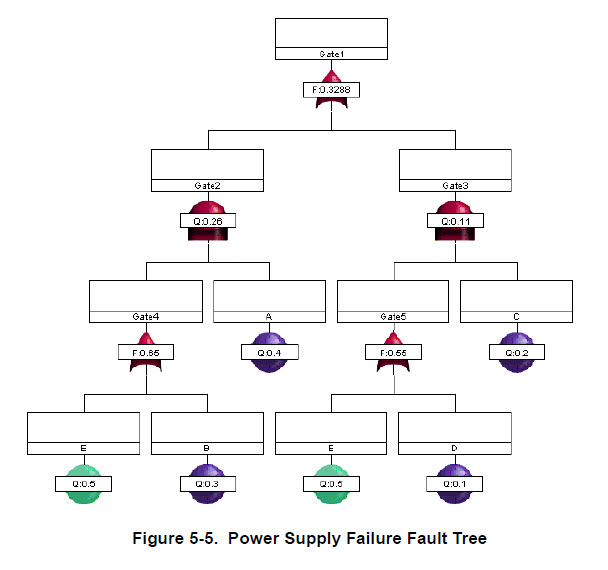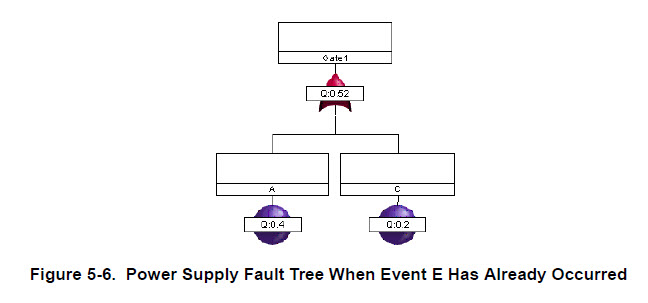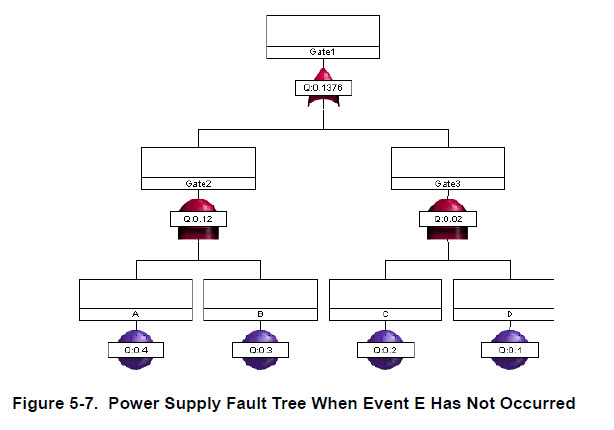Disjointing Method
This section illustrates the disjointing method, which uses the Bayes theorem while solving the fault tree. Thus, this method is similar to the method explained in the Bayes Theorem. The top event of the fault tree shown in Figure 5-5 represents the failure of this same power supply.

In this example, event E is a repeated event. The following steps are performed for the disjointing method:
1. Calculate the top event probability twice:
a. The first time, assume that event E has occurred (assume Pr{E} as 1). Denote this probability as Pr{T|E = 1}.
b. The second time, assume that event E has not occurred (assume Pr{E} as 0). Denote this probability as Pr{T|E = 0}.
2. Calculate Pr{T} as Pr{E} Pr{T|E} + Pr{~E} Pr{T|~E}.
Calculation of Pr{T|E}
Pr{T|E} is the probability of the top event of the fault tree shown in Figure 5-6. This figure is simplified based on the condition that Event E has already occurred.

Thus:
Pr{T|E}= 1 - (1-Pr{A}) (1-Pr{C})
Similarly, Pr{T|~E} is the probability of the top event of the fault tree shown in Figure 5-7. This figure is simplified based on the condition that Event E has not occurred.

Thus:
Pr{T|~E}= 1 - (1-Pr{A} Pr{B}) (1-Pr{C} Pr{D})
Finally, the top event probability, Pr{T} is given below:
Pr{T} = Pr{E} (1 - (1-Pr{A}) (1-Pr{C})) + Pr{~E} (1 - (1-Pr{A} Pr{B}) (1-Pr{C} Pr{D}).
Assuming that the probabilities of the basic events are:
Pr{A} = 0.4
Pr{B} = 0.3
Pr{C} = 0.2
Pr{D} = 0.1
Pr{E} = 0.5
Then:
The top event probability is 0.3288.
This means that system unreliability is 0.3288 and hence system reliability is 1 – 0.3288 = 0.6712.